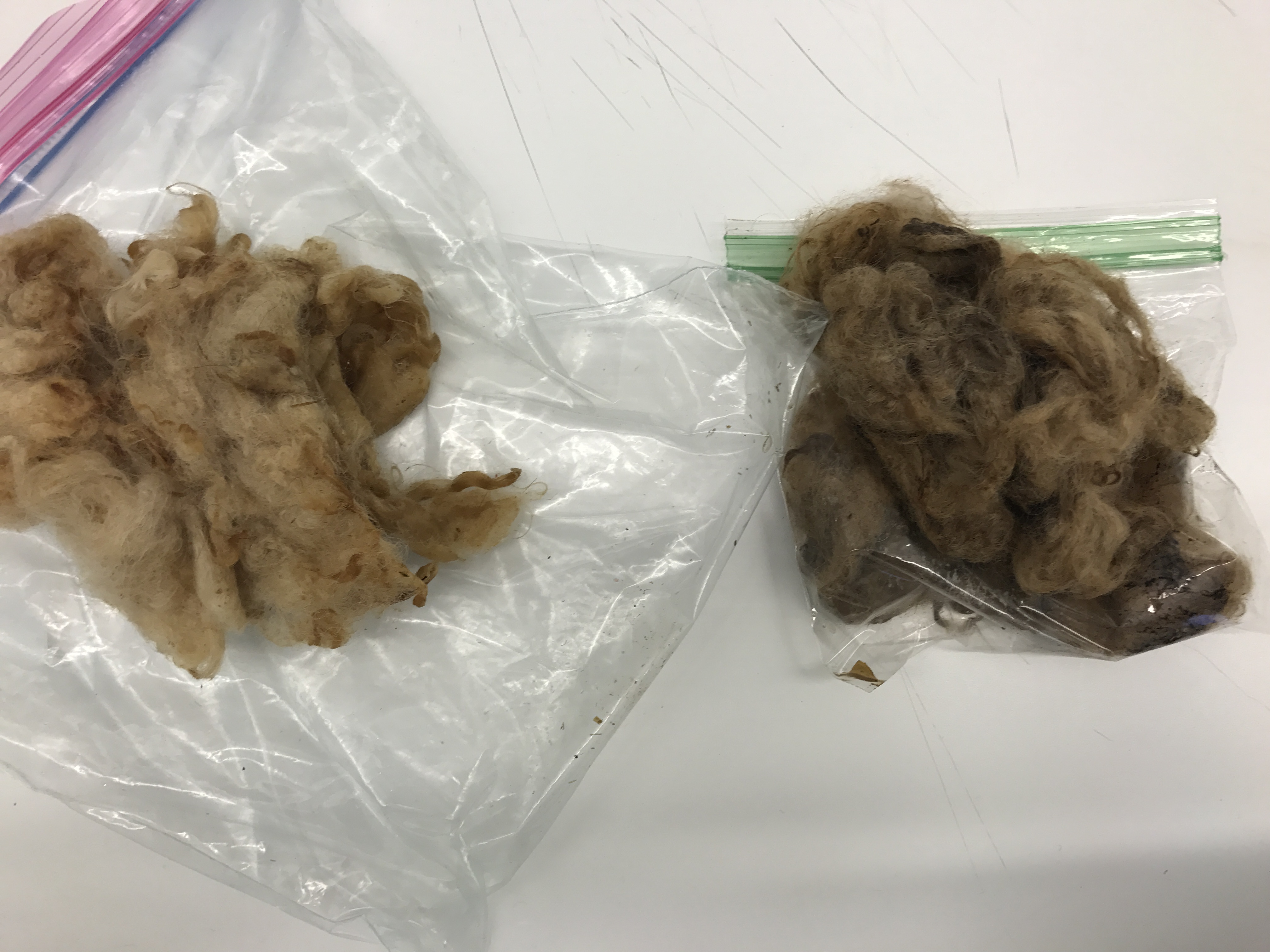Synthetic dye’s and color processing continues to pollute our world and make the fabrics we wear on a daily basis not only toxic to our bodies, but our Earth as well. After being thrown away, these artificial dyes make clothing harder to break down and release far more pathogens into our atmosphere than organic, natural dyes.
This week, we were given a demo on how to extract the color of plants, and other natural items, and were given the assignment to dye our own samples of cotton at home. I was paired with Kitty, and we chose to use what we had most of: green tea, and coffee beans. Obviously, these wouldn’t give off super crazy colors like purple or green, but we both agreed that they would provide the most intense and pigmented colors. I knew that because these two “plants” were so heavily pigmented, they would give off a similar brown/beige color (as they did). During our process, the water picked up a lot. After cleaning the wool, the water was oily and had some left over residue in the bottom of the pot. Im not really sure what these “things” were, but I figure they were just a by-product of the wool itself. When adding the acid/alkaline to the dye mix, the wool AND cotton took the dye a little better, but it wasn’t extremely noticeable, both of us concluded that we should have added more of the powder to it. Because of this, we ended up just combining the two samples back together because you literally couldn’t tell them apart.
Kitty and I were unable to complete this assignment because her roommate had thrown away the Cotton swatch we were given last Friday. We will redo this part of the lab and update out LP’s accordingly.
- Cleaning
- Cleaned
- Separating Wool
- Coffee Dye
- Submergence
- Final!
While synthetic dyes are more convenient and easily obtainable, our culture needs to realize the importance of sustainability, and start at the source.






